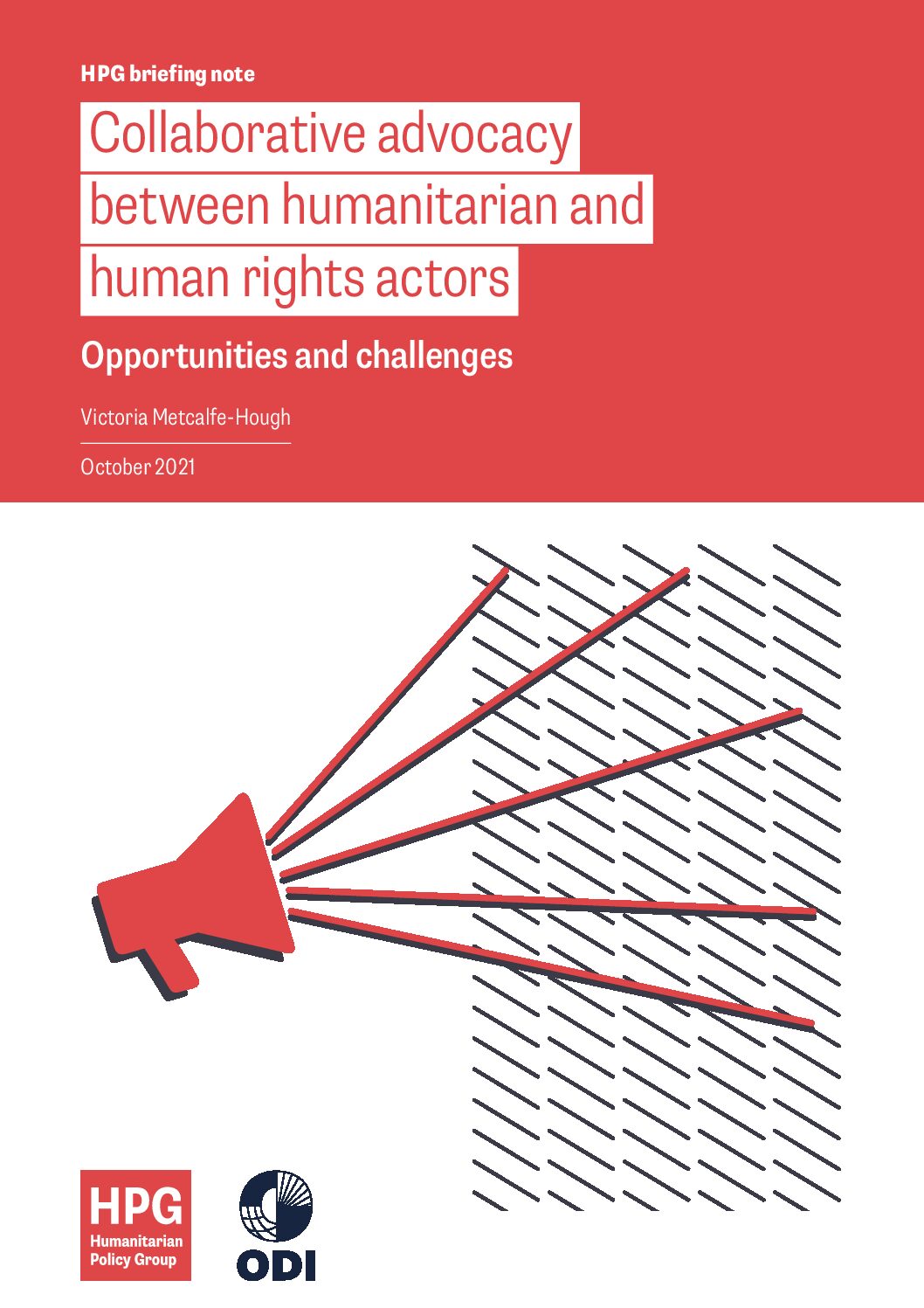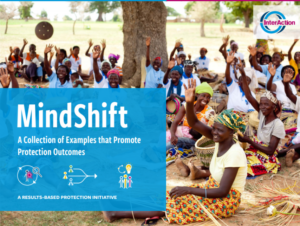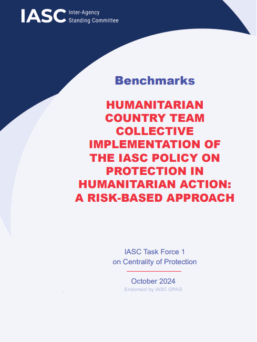There is a general agreement that addressing the complex protection threats facing civilians affected by armed conflict requires a multidisciplinary response that cuts across sectors and disciplines. Nevertheless, it remains challenging to put this into practice. ODI’s recent publication, ‘Collaborative advocacy between humanitarian and human rights actors’ takes a look at potential roadblocks to achieving effective cross-sectoral collaboration and outlines a set of recommendations to overcome these hurdles.
What factors inhibit greater collaboration?
ODI engaged in extensive research to better understand the lack of collaboration between international humanitarian and human rights actors. The research consisted of a series of bilateral, semi-structured interviews, and bilateral consultations with more than 20 experts from both human rights and humanitarian spheres, from the UN, and from civil society. Some of the factors leading to challenges in collaboration include:
- Gaps in institutional capacities and learning opportunities (Metcalfe-Hough, 2021, p. 9):
- There is still confusion among some humanitarians on how ‘protecting human rights’ relates to ‘protection of civilians’ or ‘humanitarian protection’, and this has impacted how they understand the opportunities for collaborating with human rights partners on advocacy. This confusion may stem from a lack of adequate technical capacity in humanitarian organizations on international human rights law and related architecture – how it functions, how they can use it in pursuit of their protection objectives, and how they in turn can support it as a global tool to secure the rights of conflict-affected civilians.
- Differing Priorities and approaches (Metcalfe-Hough, 2021, p. 10):
- Additionally, among humanitarian leadership, there are often disagreements about strategy and tactics around public accountability. For example, many human rights organizations have a dedicated capacity for identifying perpetrators of abuse and a strong desire to ensure those perpetrators are brought to justice. However, for most humanitarian organizations, seeking accountability is a complex and sensitive issue that many choose not to pursue.
- Individual rather than institutional collaboration (Metcalfe-Hough, 2021, p. 11)
- Although there is widespread agreement on the need for increased collaboration, bilateral collaboration tends to be dependent on personal relationships rather than a structured collaboration between institutions.
- Limitations of existing structures for collaboration (Metcalfe-Hough, 2021, p. 11)
- The Global Protection Cluster is one avenue for enabling strategic coordination and collaboration between humanitarian organizations. However, many have noted cluster coordinators who’d like to prioritize collaboration are often bogged down with other responsibilities and processes.
- Politics and the limits of protection advocacy (Metcalfe-Hough, 2021, p. 17)
- Another inhibitor of effective collaboration between humanitarian and human rights actors is the political context in which they are operating. Practitioners consulted as part of ODI’s research cited national and geopolitics as key barriers or challenges to the ability of humanitarians to influence the behavior of conflict actors. For example, in Yemen, although collaborative advocacy effectively raised the profile of the impact of international arms sales and the wider protection situation of civilians caught up in the conflict there, ultimately, the halt in UK arms sales to Saudi Arabia was only temporary and trade resumed a year later.
Although there has been progress in terms of granting system-wide momentum for shifts in practice, there’s still room for improvement. ODI’s recommendations include:
- The Global Protection Cluster, with the support of its UN and civil society member organizations, should develop a clear plan of action to build system-wide capacities for more collaborative advocacy between humanitarian and human rights actors (Metcalfe-Hough, 2021, p. 24).
- UNHCR and OHCHR should set out a strategic framework for their institutional collaboration (Metcalfe-Hough, 2021, p. 24).
- Building on this revised partnership, OHCHR should make a particular commitment to ensure expanded and more predictable engagement with the Human Rights Reference Group. (Metcalfe-Hough, 2021, p. 25).
- Seizing the opportunity of the concurrent IASC protection policy review and development of the UN SG’s Agenda for Protection, the UN and IASC coordinators of these processes should ensure appropriate synergies and links are exploited in an effort to gain maximum internal and external momentum for a more collaborative approach between international humanitarian and human rights actors (Metcalfe-Hough, 2021, p. 25)., the UN and IASC coordinators of these processes should ensure appropriate synergies and links are exploited in an effort to gain maximum internal and external momentum for a more collaborative approach between international humanitarian and human rights actors (Metcalfe-Hough, 2021, p. 25).
- UN entities, INGOs, and the Red Cross and Red Crescent Movement that are engaged in protection work should individually and collectively through the IASC consider how they can enable more predictable and more sustained collaboration with international human rights partners (Metcalfe-Hough, 2021, p. 26).
- Donor states should also consider how they can enable a more collective approach to advocacy (Metcalfe-Hough, 2021, p. 26).
What is InterAction doing to promote multi-disciplinary strategies?
As noted, InterAction, through its work on RBP, has observed many of the inhibitive factors to increased collaboration among humanitarian and human rights actors and is working to address them. For example, InterAction encourages collaborative advocacy between humanitarian and human rights actors, and documents case examples shared by organizations that have adopted multi-disciplinary strategies to achieving protection outcomes. As noted in our recent publication, MindShift: A Collection of Examples that Promote Protection Outcomes, identifying and documenting examples of effective multi-disciplinary strategies proved difficult for many of the same reasons identified in ODI’s report. InterAction continues to seek out and facilitate examples of effective collaboration.




